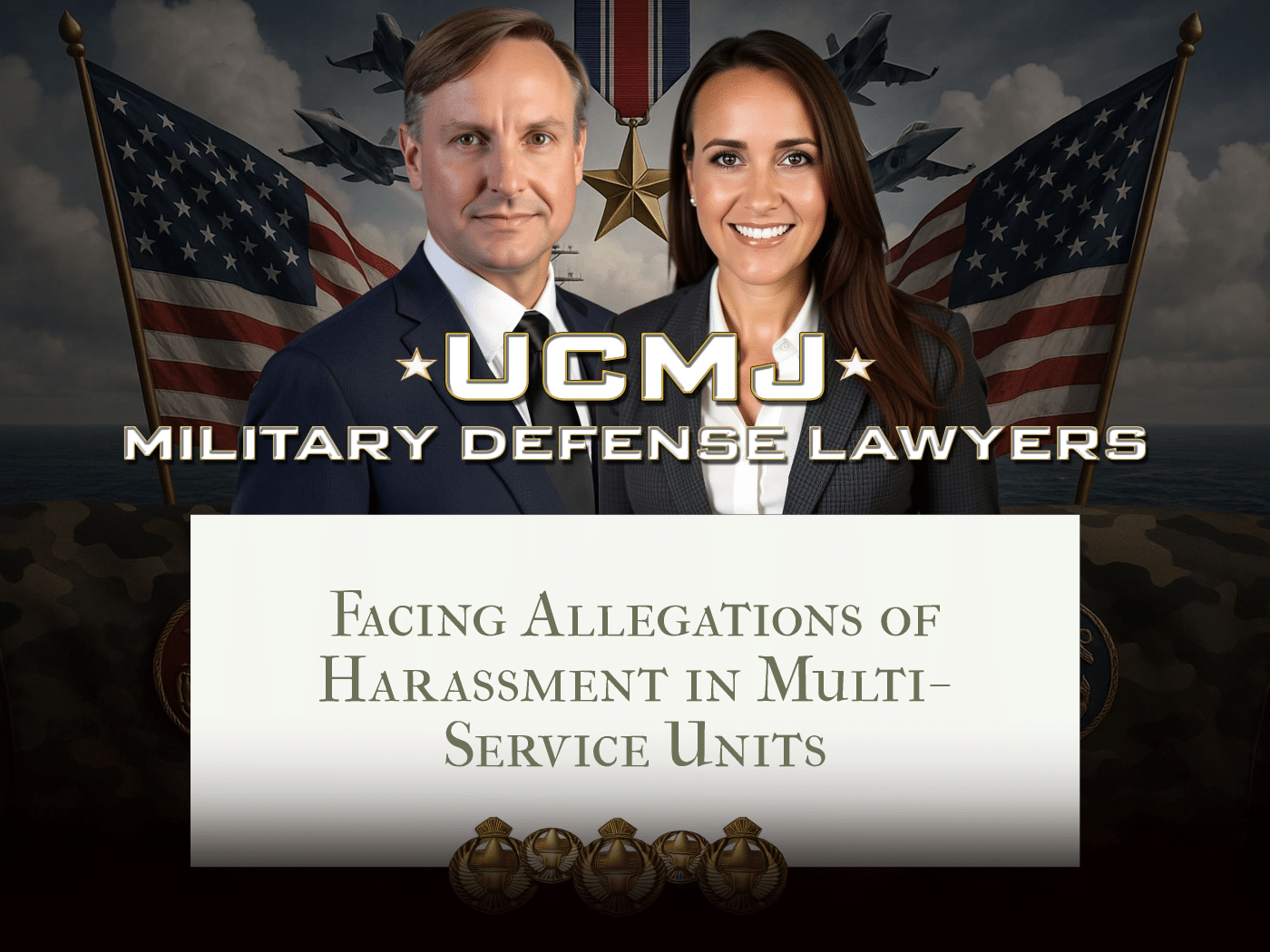Allegations of harassment can be deeply distressing for anyone involved, especially in a high-stakes environment like a multi-service unit. Dealing with Multi-Service Harassment means navigating accusations that may span multiple branches of service, chain-of-command complexities, and heightened scrutiny. For service members, facing such serious claims brings not only professional risks but also personal and emotional challenges.
It’s important to understand that these accusations, whether substantiated or not, can affect promotions, duties, and even long-term careers. In this blog, we’ll explain what Multi-Service Harassment means, how to respond if accused, and what steps are involved in investigating these claims. Through proactive, informed strategies and strong legal defense, service members can protect their rights and pursue fair treatment. We also explore how Gonzalez & Waddington supports clients facing these complex allegations and what practical steps to take immediately after an allegation arises.
Understanding the Basics of Multi-Service Harassment
Multi-Service Harassment refers to cases of harassment that arise within environments involving multiple branches of the military working together. This could involve joint task forces, combined commands, or multinational operations. In these settings, service members from the Army, Navy, Air Force, Marines, and sometimes allied foreign forces, operate under one umbrella. The challenge with these scenarios is that harassment investigations may involve crossing jurisdictional boundaries and navigating different codes of conduct.
For example, if an Army soldier files a harassment complaint against a Navy superior in a joint base setting, determining which Uniform Code of Military Justice (UCMJ) policies apply can be difficult. Similarly, a female Air Force officer may be harassed by a non-commissioned officer from the Marines during joint training exercises. Because each branch has varied reporting structures and disciplinary systems, cases like these can quickly become complicated. Understanding how these systems interact is crucial for anyone accused of or impacted by harassment in a multi-service environment.
The Importance and Effect of Multi-Service Harassment Allegations
Multi-Service Harassment matters because it affects readiness, morale, and trust among teams that depend on close working relationships. When misconduct occurs across branch lines, it often creates confusion about protocol, delays in investigation, and additional stress for those involved. Commanders may be unsure of jurisdiction, and victims may struggle with properly reporting incidents. The process becomes more intimidating when multiple chains of command are involved or when service members are unsure of which entity has authority over the situation.
The personal and professional impacts can be devastating. Reputations, careers, and even personal relationships may hang in the balance. Unfortunately, the dual complexity of multi-service environments often results in slow-moving investigations or inconsistent punishments. This is why clear, supportive legal counsel is absolutely critical.
- Scenario 1: A Coast Guard member assigned to a joint Navy mission faces harassment and reports it, but neither branch knows who holds jurisdiction. Consequence: The claim is delayed and improperly handled.
- Scenario 2: An Army captain accused of harassment by an Air Force subordinate is subject to two simultaneous investigations. Consequence: This leads to conflicting outcomes and unnecessary legal stress.
- Scenario 3: A lack of consistent training across branches results in unintentional harassment during combined field operations. Consequence: The accused faces punitive actions despite the misunderstanding.
Breaking Down the Process of Multi-Service Harassment Investigations
- Step 1: An informal or formal complaint is submitted through the reporting procedures of one or more service branches. The confusion often begins here if submission guidelines differ.
- Step 2: A preliminary inquiry or command-level investigation is initiated. The investigative authority must determine jurisdiction and coordinate between different service units.
- Step 3: Depending on findings, the case may escalate to legal proceedings, administrative action, or internal disciplinary hearings. Counsel from all affected branches may be involved.
Expert Advice on Handling Multi-Service Harassment Investigations
FAQs on Military Harassment in Multi-Service Units
How Gonzalez & Waddington Assists with Military Harassment Cases
Gonzalez & Waddington is a premier legal defense firm known for representing military personnel worldwide in complex cases, including Multi-Service Harassment. With decades of combined experience across all branches, their legal team understands the nuances of military law and the distinct protocols for joint service environments. They thoroughly analyze every angle of a case and advocate fiercely for their clients’ rights. Service members benefit from round-the-clock defense consultations, transparent communication, and a results-driven strategy tailored to unique circumstances. Whether facing unwanted accusations or navigating the fog of inconsistent investigative procedures, clients trust Gonzalez & Waddington to bring clarity and comfort during one of the most challenging periods in their careers. Their commitment to justice empowers clients to confidently pursue favorable outcomes and regain their reputations.
A Quick Recap on Dealing with Multi-Service Harassment



